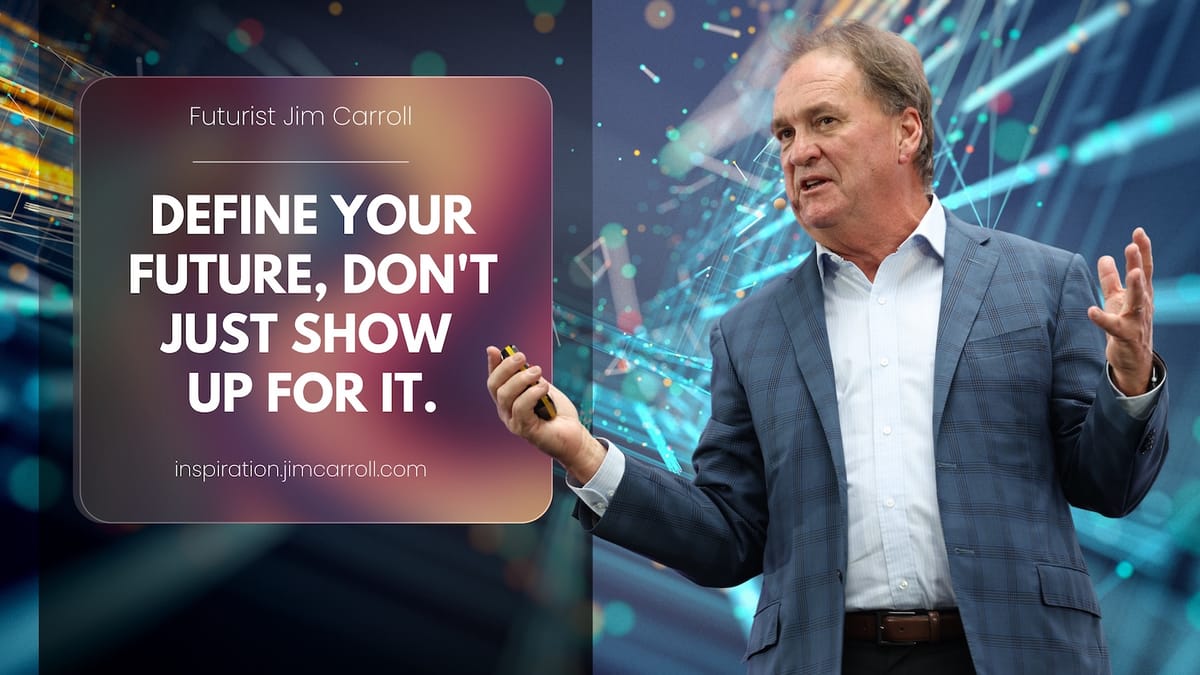"Define your future, don't just show up for it." - Futurist Jim Carroll
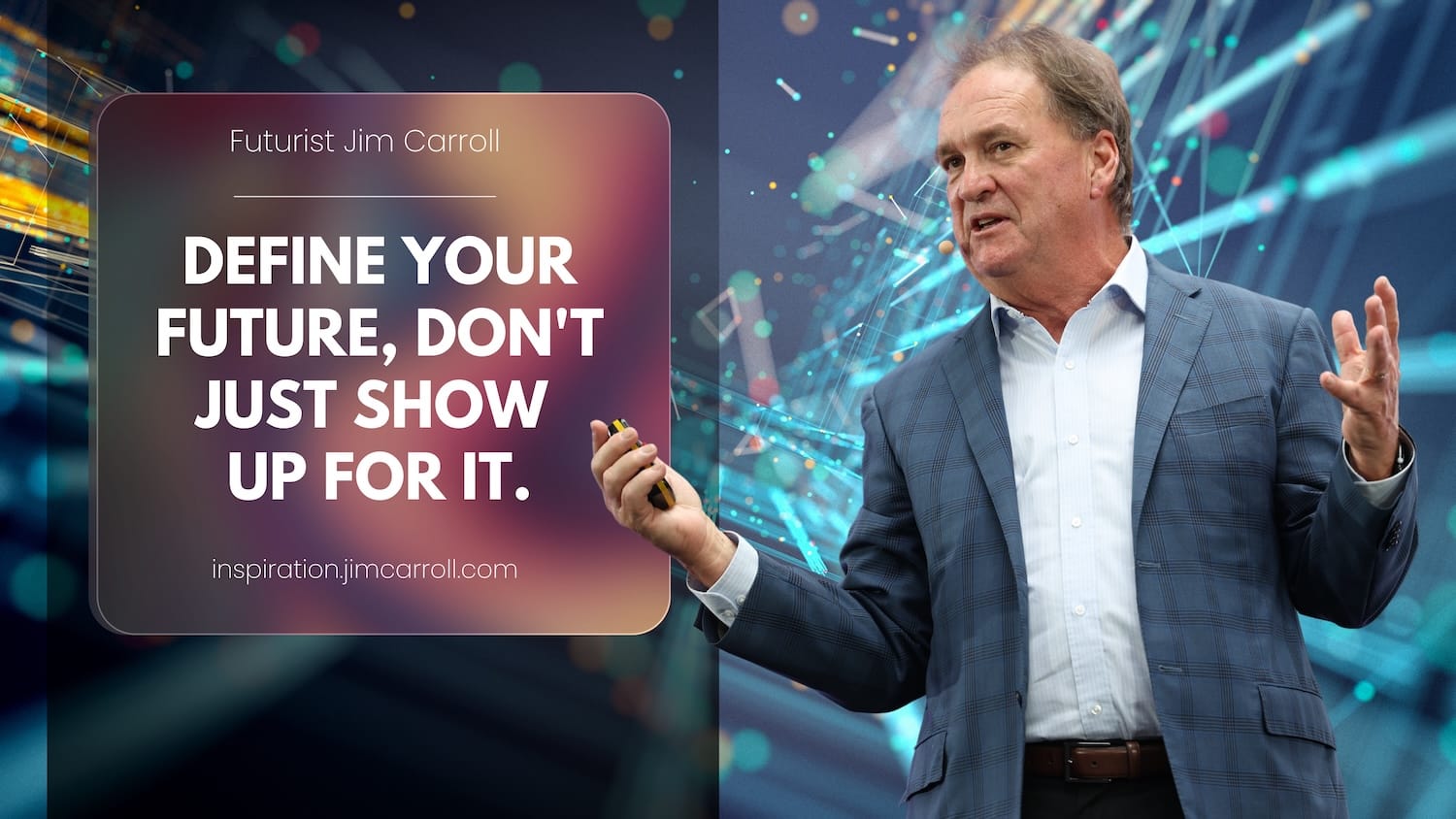
Do you make things happen, or watch things happen? Do you move forward with intention, or sit back as a passive observer? Do you take the initiative or wait for others to start you up?
Here's what I know - one of the most important things you can do is to stop simply showing up for whatever happens next. I fed 9 years' worth of my blog posts to Google Gemini and asked it, "What actions have I written about that show a proactive mindset?" It came back with the ideas below, and I must admit, these 25 "mindset hacks" are pretty powerful ideas designed to transform your approach to tomorrow, empowering you to build the future you envision - rather than simply letting it happen to you.
There are two PDFs you might find useful - the short one, with the images below. And here's a longer one that features each mindset on a separate page.
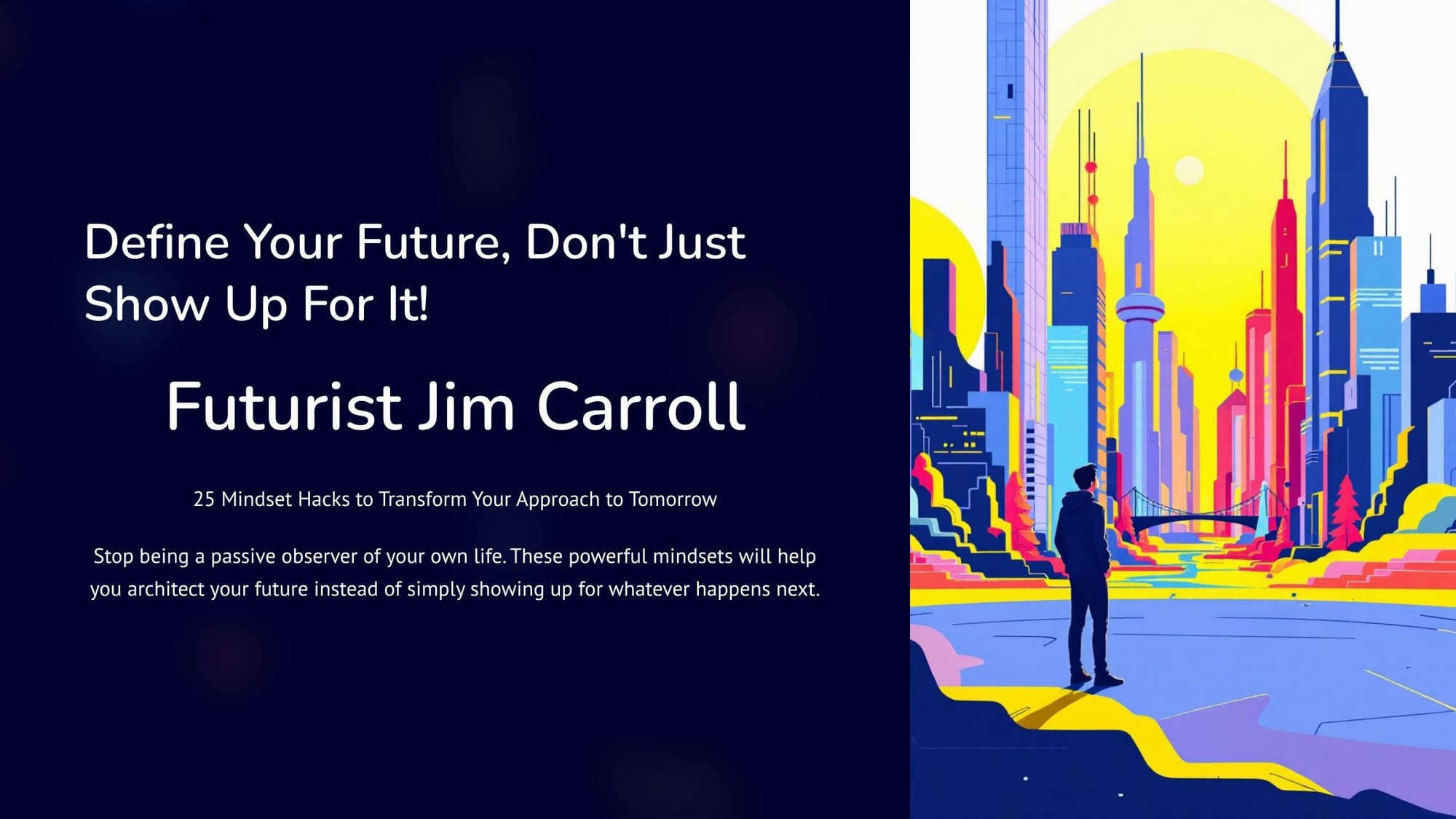
It all begins with a core philosophy: you are not a victim of circumstance but the designer of your own life. Every decision you make today is laying the foundation for tomorrow's reality. This transformation starts with one foundational mindset.
1. The Architect Mindset: See yourself as the architect of your future, not a passive tenant just living in it. Your daily choices, habits, and actions are the materials and blueprints for the life you are actively building.
25. The "Define, Don't Follow" Mindset. Don't wait for others to define your future for you. Be the one who asks the big questions, proposes the bold ideas, and takes the courageous first steps.
These are the two mindsets that should form your core philosophy: you are not a victim of circumstance but the designer of your destiny. Every decision you make today is laying the foundation for tomorrow's reality.
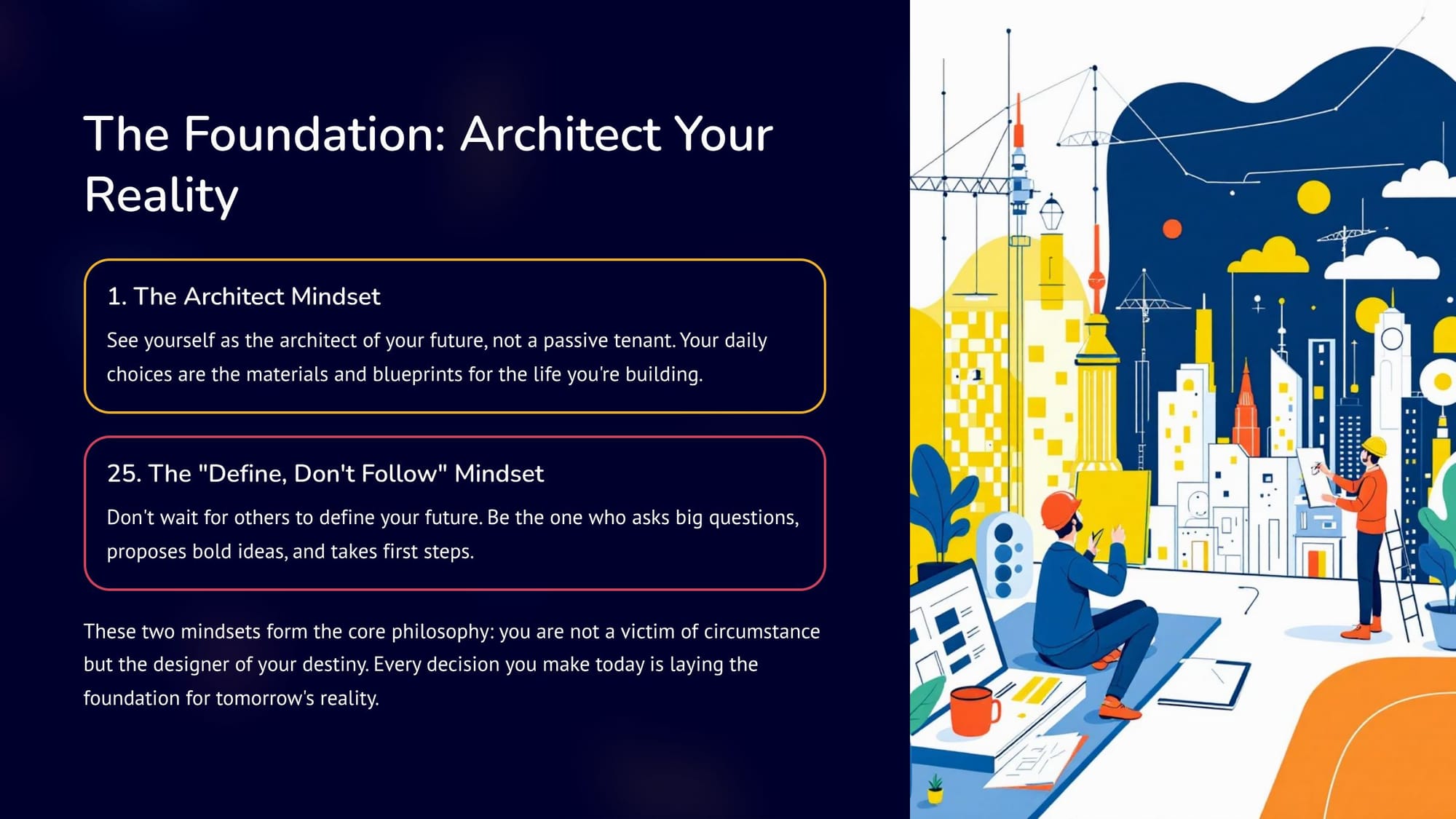
To get there, you need to move. These mindsets help you define the future you want to build instead of just reacting to the one that comes.
2. The Futurist's Mindset Regularly "visit" the future by thinking about the trends shaping your industry and the world. Ask yourself: What skills and opportunities will matter in the next 5, 10, or even 20 years? What can I do to be a part of it?
3. The "Why Not?" Mindset When you're faced with bold, audacious goals, shift your internal question from a doubtful "Why?" to an empowering "Why not?" This simple change opens up a world of possibilities and helps you move past your own internal resistance.
4. The Legacy Mindset: Think beyond this moment. Consider what you want to be known for. Think about what you would really like to be recognized for. Start to build your daily actions and long-term decisions around a larger purpose - and contribute to projects that will outlast you.
5. The Optimist's Mindset Truly believe that a better future is possible and that you have a significant role to play in creating it. Ban pessimism in your mind. This allows you to see challenges not as roadblocks, but as powerful opportunities for innovation and growth.
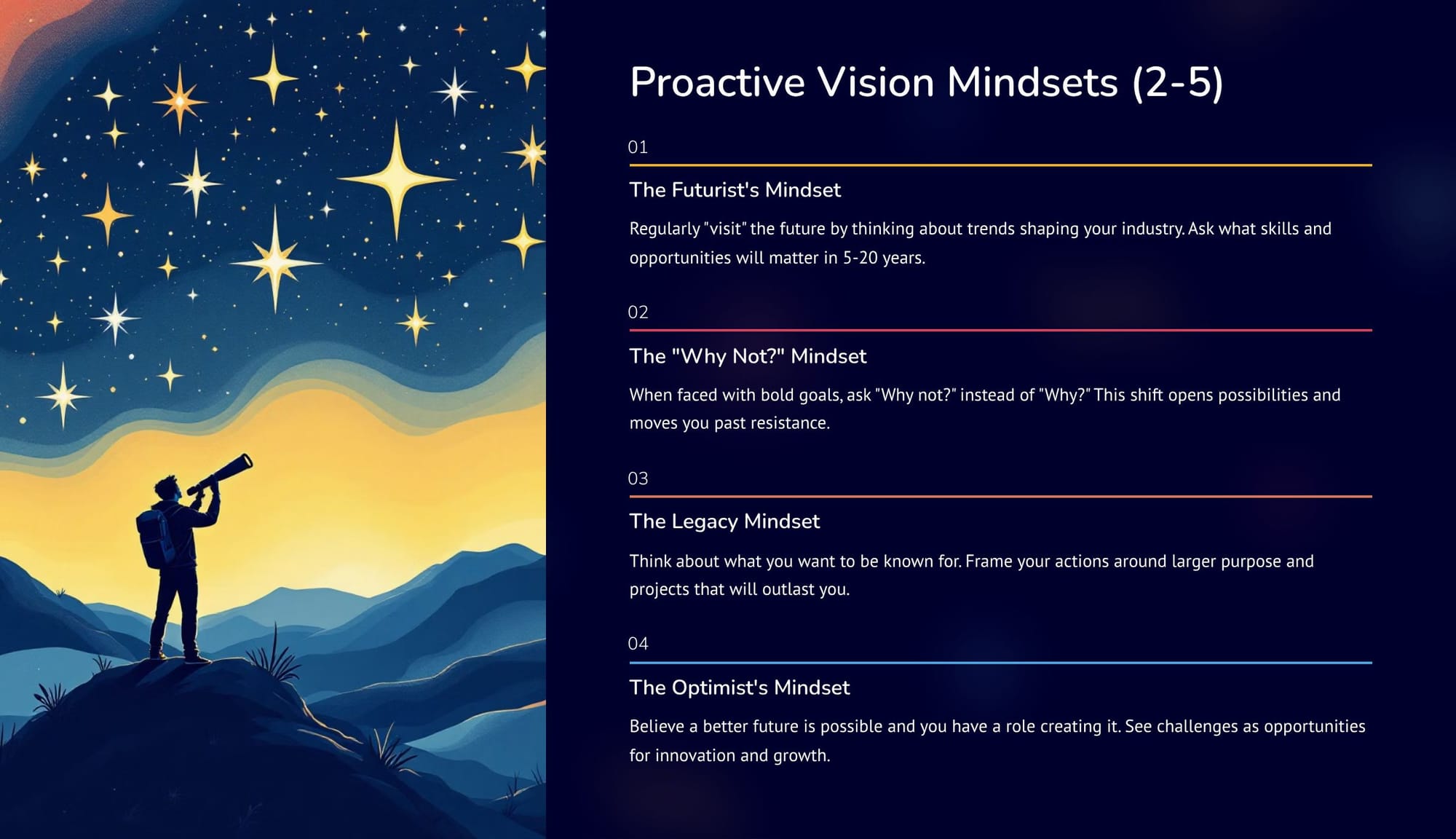
A vision for the future requires fuel, and that fuel will come from deciding to focus on continuous growth. To do that, continually upgrade yourself.
6. Just-in-Time Learner: Master the skill of learning what you need, precisely when you need it.
7. Re-skilling: Accept that skills have expiration dates. Proactively seek out new skills to stay relevant and effective.
8. Portfolio Career: Shift your thinking from a linear career path that will involve one set of skills to a career that will be based on a portfolio of different skills and experiences.
9. Reverse Mentorship: Be open to learning from everyone, regardless of their age or rank. Everyone has a unique perspective to offer.
10. Transient Advantage: Embrace the idea of temporary success - always be looking for the next win. Stay hungry for the next wave of innovation, knowing that what works today won't necessarily work tomorrow.
Above all, take decisive action. Recognize that any type of movement forward is critical - standing still is a recipe for setbacks.
11. Action Over Perfection: Remember that progress beats perfection every single time. Don't let the quest for the perfect plan prevent you from starting.
12. Experimenter's: Treat every idea as something you can test. Launch, learn, and iterate rather than waiting for certainty.
13. Aggressive Indecision Reversal: Understand that not deciding is, in itself, a decision for the status quo. Make a choice and move forward with purpose.
14. Fast Follower: You don't always have to be the first. Develop the skill to quickly adopt and improve upon the innovations of others.
15. 24-Hour Rule: When inspiration strikes, take meaningful action within 24 hours to capture and build upon that momentum.
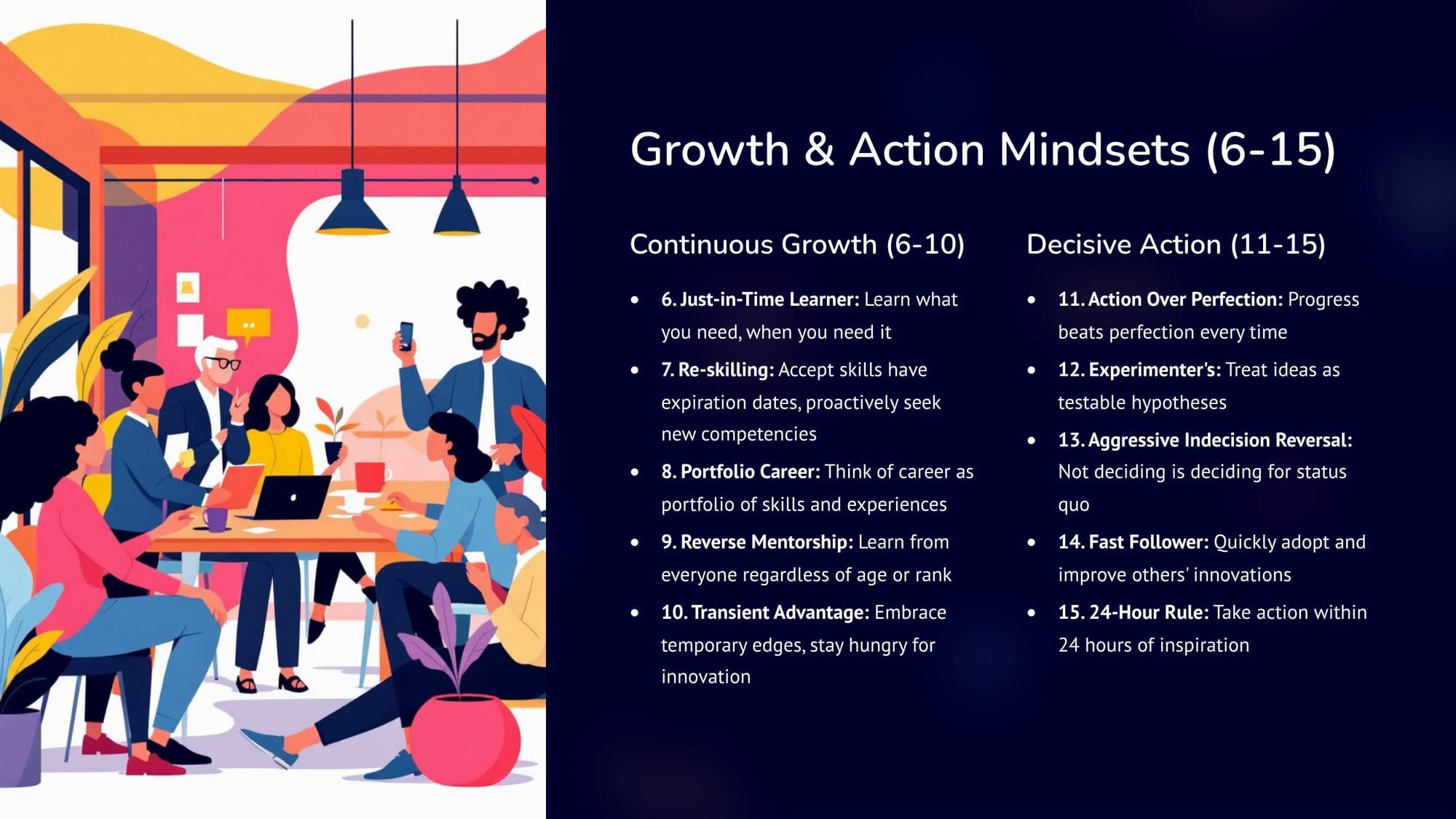
With all this, you've got to be able to bounce back. That involves a "resilience & innovation mindset." That will allow you to better navigate the surprises, the volatility, the uncertainty. I wrote about this a LOT in my Dancing in the Rain book.
16. See Opportunity in Storms: Crises and disruptions aren't just threats; they create the necessary space for bold new ideas and transformative change to emerge.
17. Challenge Assumptions: Regularly question your "tin cans"—the things you think you can't do—and push your own boundaries.
18. Generational Bridge: View differences between generations not as a source of conflict, but as strategic assets that bring diverse and valuable perspectives.
19. Embrace the Gig Economy: Think and act like a freelancer—always focused on delivering value, building your skills, and actively managing your own career trajectory.
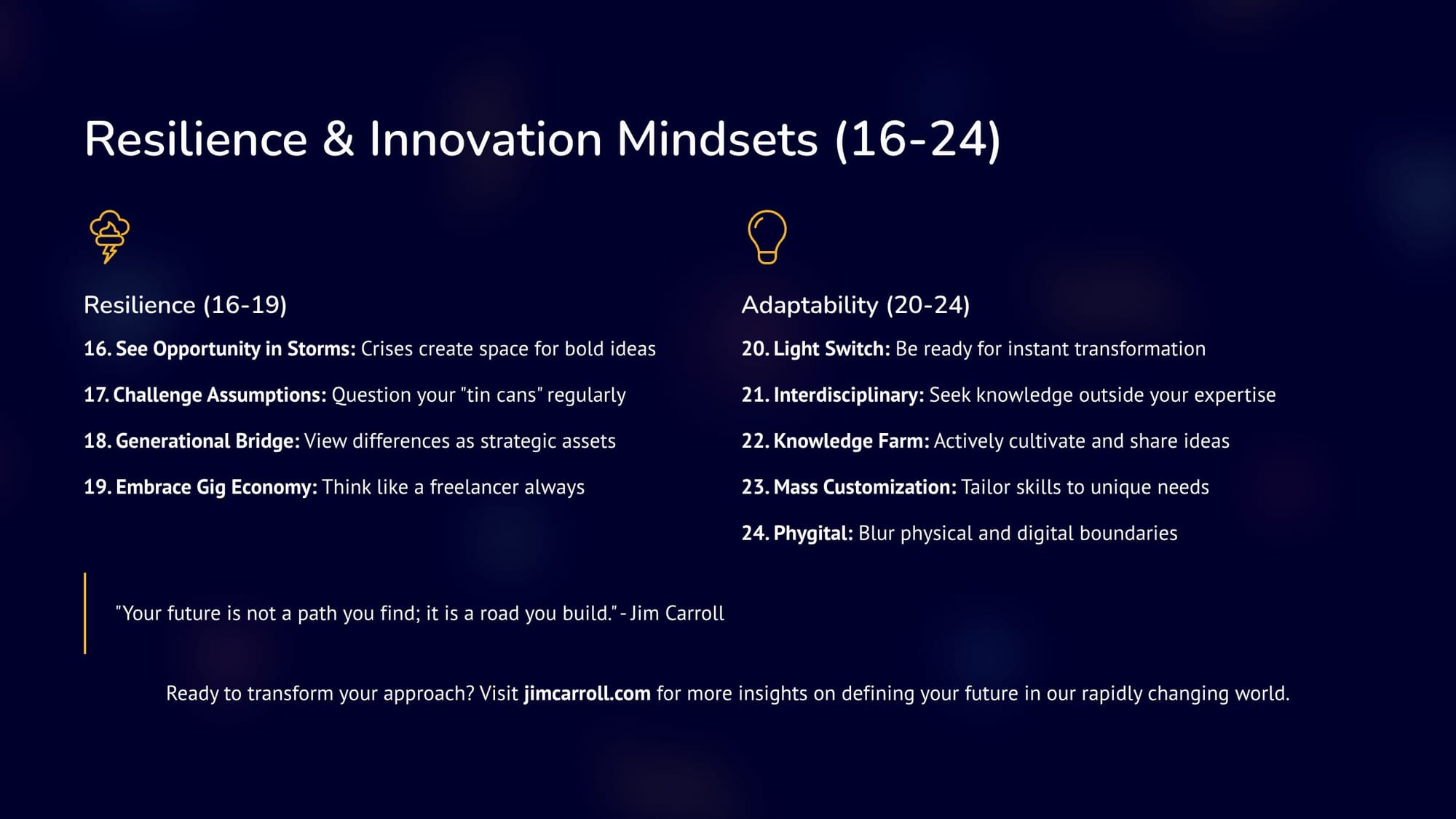
And in all this, learn to adapt.
20. Light Switch: Cultivate the ability to be ready for instant transformation and pivot quickly when circumstances change.
21. Interdisciplinary: Actively seek knowledge and inspiration from fields outside your own expertise. The most exciting innovations often happen at the intersection of different disciplines.
22. Knowledge Farm: Don't just consume information. Actively cultivate and share ideas with your network to foster collaborative growth and collective intelligence.
23. Mass Customization: Learn to tailor your skills, services, or products to meet the unique and specific needs of your audience.
24. Get Phygital: Blur the boundaries between the physical and digital worlds to create new, innovative, and integrated experiences.

Your defining mindset with all this? Don't follow, define! All these mindsets lead to one powerful, concluding principle that brings the architect's philosophy full circle and empowers you to take control.
"Your future is not a path you find; it is a road you build." – Jim Carroll
Ready to transform your future?
With a mindset of 'continuous personal reinvention,' Futurist Jim Carroll has never stood still.

